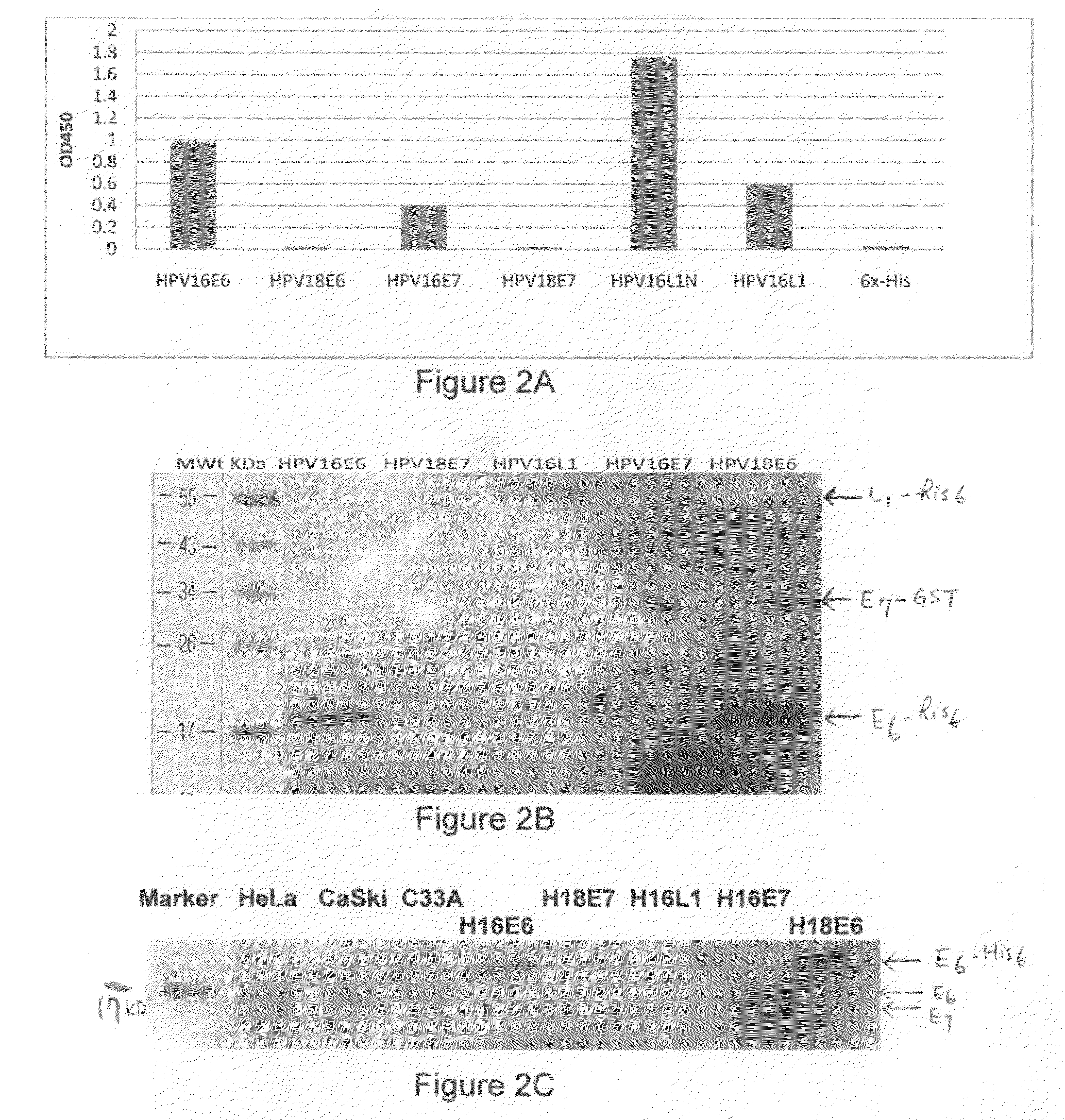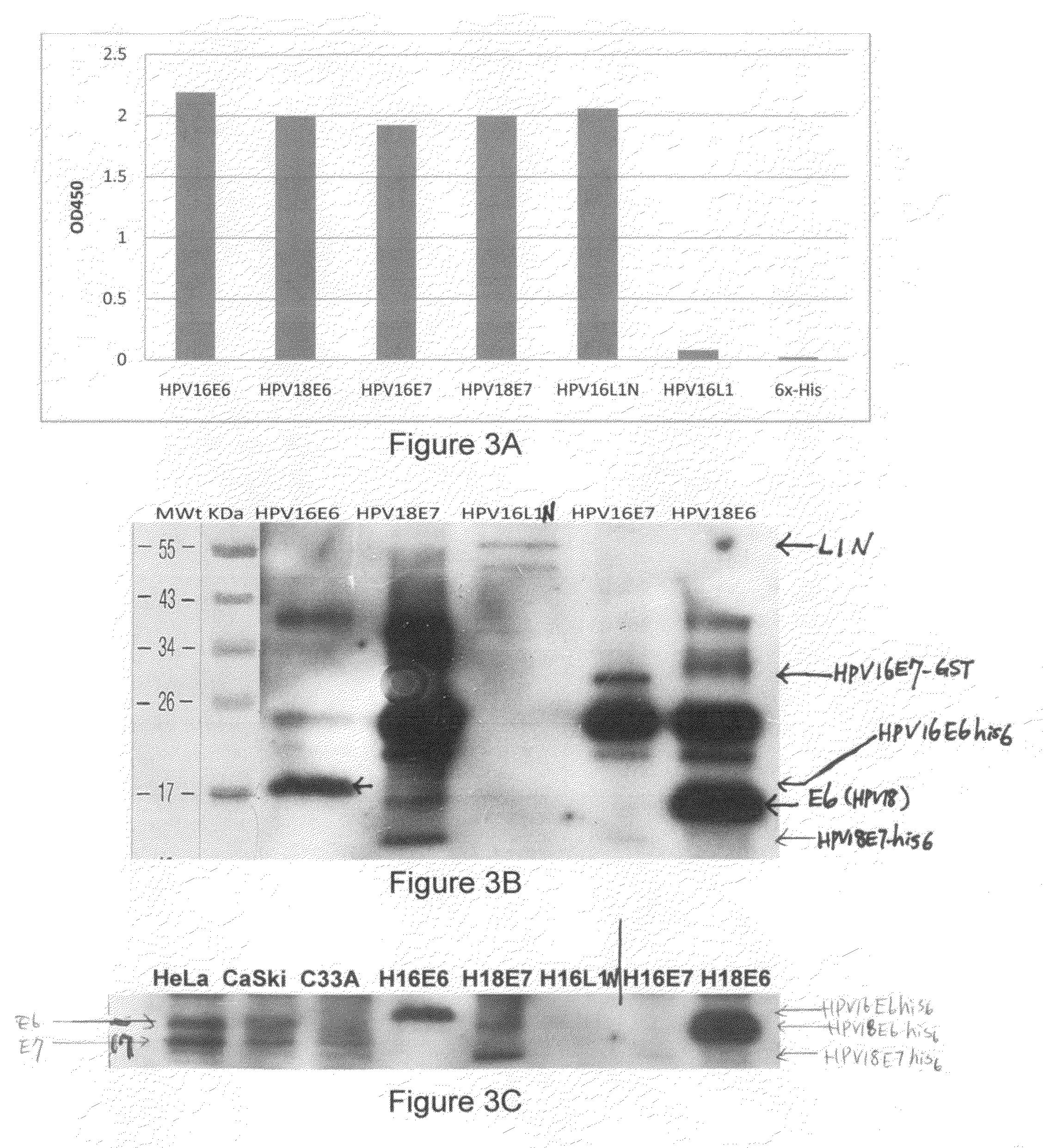Novel monoclonal antibodies against HPV proteins
a technology of hpv protein and monoclonal antibody, which is applied in the field of new monoclonal antibodies against hpv proteins, can solve the problems of poor inter- and intra-observer agreement, difficulty in obtaining samples, and high risk of invasive cervical cancer progression, and achieves high risk, low risk, and positive reactivity
- Summary
- Abstract
- Description
- Claims
- Application Information
AI Technical Summary
Benefits of technology
Problems solved by technology
Method used
Image
Examples
examples
1. HPV Recombinant Protein Expression, Purification, and Preparation to be Used as Immunogens for Generating Antiserum, and Screening for Monoclonal Antibody from Hybridoma Cell Lines
[0079]HPV recombinant proteins can be any kinds of HPV proteins, HPV proteins of early genes and / or late genes, including, but not limited to, E2, E6, E7, L1, L2 and can be from various HPV types. One aspect of the invention provides recombinant proteins, such as recombinant hybrid proteins containing a partial sequence or a full length sequence of HPV oncogenic proteins. For example, full-length E6, E7, and / or L1 polypeptide sequence, which have been found very difficult to obtain and purify due to undesirable aggregation during protein purification, protein instability, low levels of expression, low immunogenic responses of purified proteins. For example, many early E6 oncoproteins contain many cysteine amino acids and thus the correct topography of the E6 oncoproteins requires formation of many disul...
PUM
| Property | Measurement | Unit |
|---|---|---|
| concentration | aaaaa | aaaaa |
| molecular weight | aaaaa | aaaaa |
| molecular weight | aaaaa | aaaaa |
Abstract
Description
Claims
Application Information
 Login to View More
Login to View More - R&D
- Intellectual Property
- Life Sciences
- Materials
- Tech Scout
- Unparalleled Data Quality
- Higher Quality Content
- 60% Fewer Hallucinations
Browse by: Latest US Patents, China's latest patents, Technical Efficacy Thesaurus, Application Domain, Technology Topic, Popular Technical Reports.
© 2025 PatSnap. All rights reserved.Legal|Privacy policy|Modern Slavery Act Transparency Statement|Sitemap|About US| Contact US: help@patsnap.com



